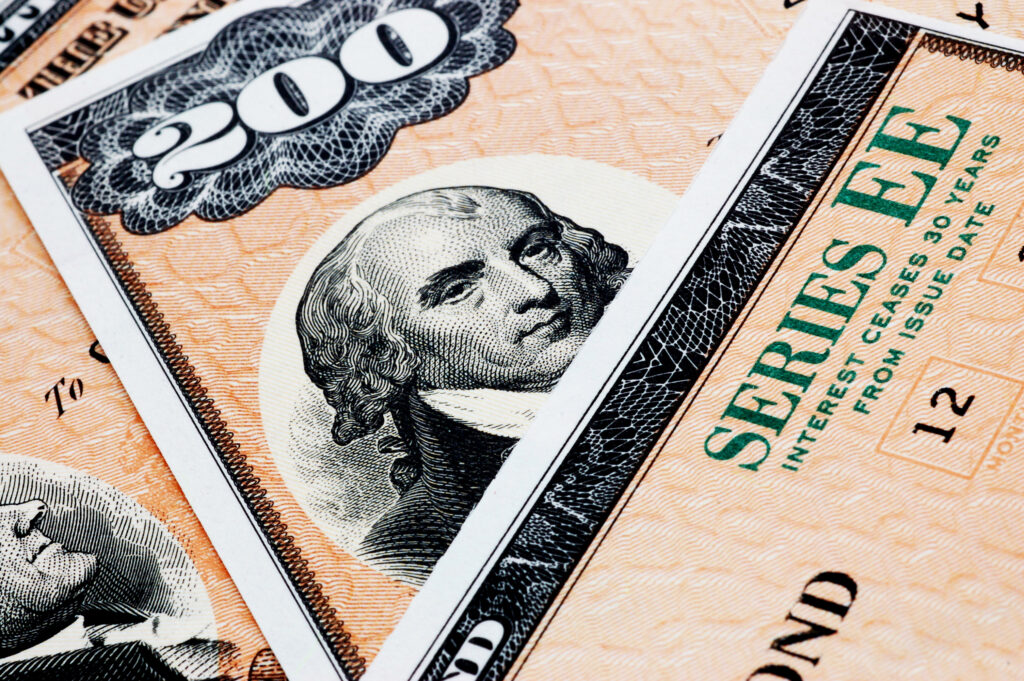Client Question: Savings Bonds
November 2, 2023
When I was in high school, I received an academic award and as part of that, I was given a Series EE US Savings Bond. It was a $200 denomination. This was in 1996. A lifetime ago!
I don’t have an memory of this, but recently, my mom was cleaning out her house and gave me my saving bond. I instantly had two questions – what is this worth and how do I cash it in before I misplace it! What I learned was rather interesting and illustrative of a key concept I constantly remind myself (and clients) of, especially in recent months. So let’s answer my questions on savings bonds this week!

Quick refresher: Savings Bonds
There are two types of savings bonds issued by the US Government – Series EE and Series I (remember when those were all the rage? You can read more about Series I Savings Bonds here)
Series EE Bonds are deemed ultra-safe, low risk investments backed by the US Government. They are sold for half of their stated denomination (so my $200 bond was sold for $100 when issued). For any Series EE Bonds issued today, the are guaranteed to double in value within 20 years, and will then pay a rate of interest for the next 30 years (adjusted semi-annually based on the interest rate curve at that time). A doubling in 20 years equates to a 3.6% interest rate during that time period and after that, the rate will vary.
My bond worked a bit differently as they were issued in the late 1990s but the concept is the same – very conservative rate of interest over a very long period of time.
Valuing Savings Bonds
The US Treasury has a great tool to find the value of your savings bonds (if you too have some in a drawer or safety deposit box). This calculator will show you the principal and interest of your bond. It was also show you the next accrual date, which is important as the interest payments are made on those semi-annual accrual dates (so you want to cash out right after an accrual date to maximize payout)
Tax Impacts
Series EE bonds are subject to taxation. You will pay federal income tax (but not state income tax) on any interest income earned
Now, Back to My Bond
When I priced my bond, I discovered that my $200 denomination bond issued in 1996 was now worth… $232.23. Again, it was originally issued for $100, so in 27 years, that $100 has grown to $232.23. That is an annualized return of 3.2%, before the income tax I’ll pay on the interest.
Risk Premium in Action
I am who I am, so I was curious how this safe/risk free rate of return since 1996 compared to an alternative path my high school could have taken 27 years ago. What if they had given me $100 in cash that I could have invested in the S&P 500 instead? That $100 would have grown to ~$1,200 as of today. That equates to a 9.4% annualized rate of return and 5x higher ending value than my savings bond has provided.
This 6.2% higher return per year (9.4% per year on S&P less 3.2% per year on savings bond) is a perfect illustration of the concept of risk premium – which is the investment return an asset is expected to yield in excess of the risk-free rate of return over time. You should earn more in an equity than you do in a savings bond as you are subjecting yourself to volatility and possible loss of principal – both of which are not on the table when investing in a savings bond (provided the US retains it high credit rating and ability to repay).
And just to torture (I mean, educate!) myself, I calculated how much I could have earned if my school had given my $100 and I had invested it in an up and coming company at the time called Apple. That $100 would now be worth $53,000 – now there is the risk premium in full force!
Investors today (and many of my clients) are justifiably drawn to the risk free rate, as Fed action’s have allowed a ~5% rate to be earned in cash, money markets, and short-term treasuries – all which bear little to no risk. Without a doubt, that risk-free rate is above historical average and is a wonderful rate for cash savings, upcoming spending funds, and emergency savings. However, proceed with caution if choosing to allocate a meaningful amount of your portfolio into the risk-free rate for the long-run. As you can see in my simple illustration above, as investors, that safe return is very likely to cost you a considerable amount over time – you just may not see or feel that cost until you “do the math” as I have just done.
Now I’m off to the bank to cash this thing in – and invest the proceed!
Leave a note